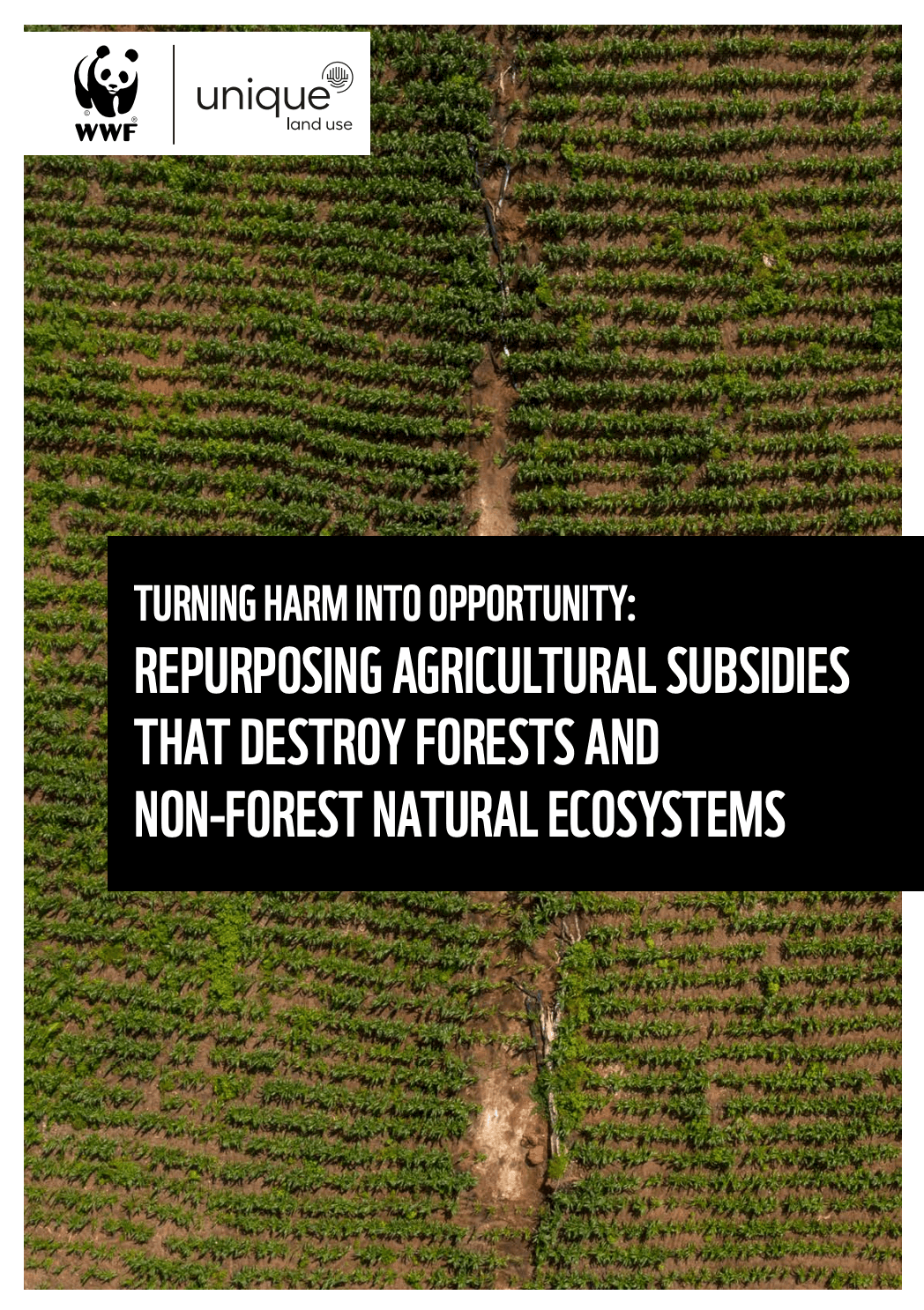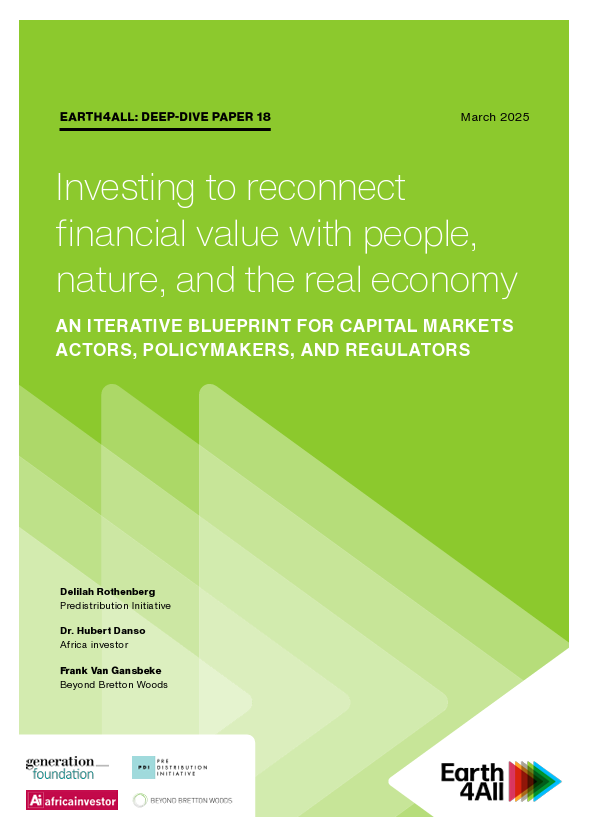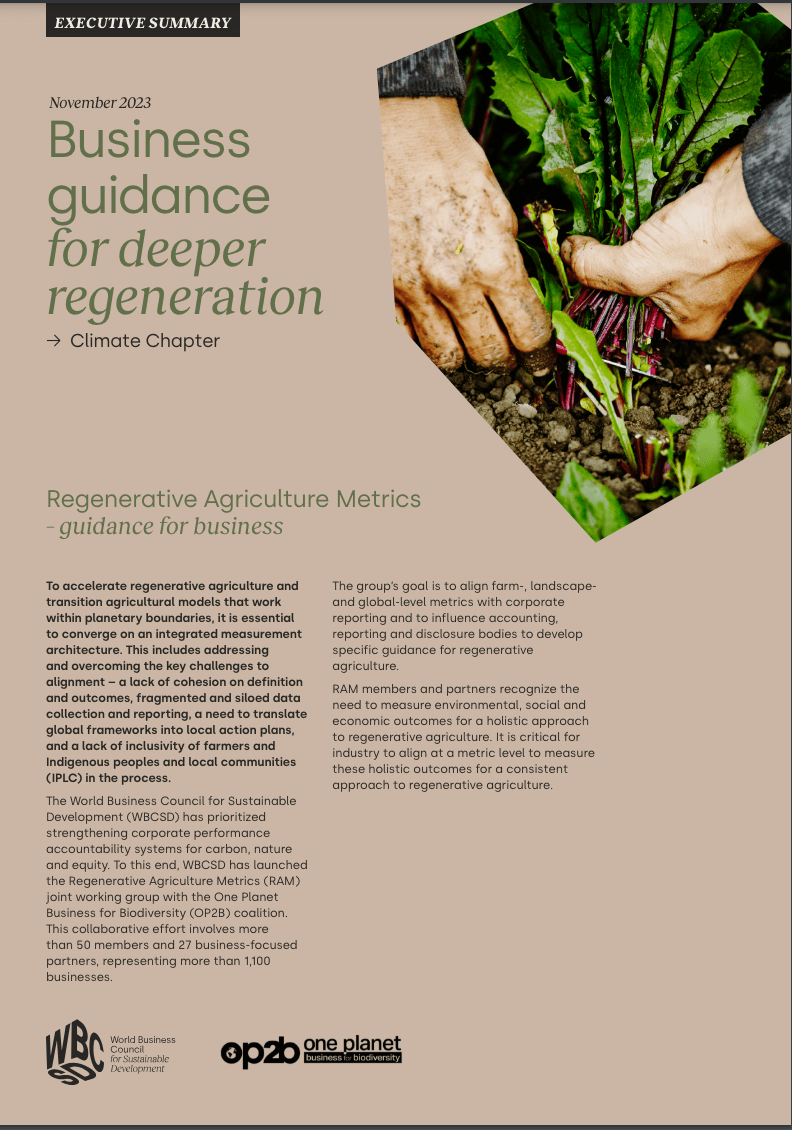Detalles
| To accelerate regenerative agriculture and transitional agricultural models that work within planetary boundaries, converging on an integrated architecture is essential. This includes addressing the main issues of lack of cohesion in definition and outcomes, the collection of fragmented isolated data, the need for global frameworks in local action plans, and the lack of inclusion of farmers, indigenous peoples and local communities (IPLCs) in the process. The World Business Council for Sustainable Development (WBCSD) has prioritized strengthening business performance on carbon, nature, and equity. To this end, the WBCSD has launched the Regenerative Agriculture Metric (RAM), with the One Planet Business for Biodiversity (OP2B) coalition. This collaborative effort involves more than 50 members and 27 partners representing more than 1100 companies. The group's goal is to align farm, landscape, and global metrics with corporate reporting and influence company accounting and accounting, reporting, and outreach bodies to develop specific guidelines for regenerative agriculture. MAR members and partners recognize the need to measure the environmental, social, and economic outcomes of regenerative agriculture. It is critical for the industry to align at a metric level to measure these holistic outcomes for a coherent approach to regenerative agriculture. In line with the growing consensus among regenerative agriculture tools and frameworks, environmental outcomes must have an impact in four areas: soil, biodiversity, water, and climate. MAR members and partners have aligned around regenerative agriculture outcomes and their respective indicators and metrics. This document provides key information related to this approach in the field of climate change. |
Recursos relacionados

Turning harm into opportunity. Repurposing agriculturall subsidies that destroy forests and non-forests natural ecosystemas
Every year, governments spend about $470 billion on agricultural subsidies that harm forests and other natural ecosystems and contribute to…

Study for a methodological framework and assessment of potential financial risks associated with biodiversity loss and ecosystem degradation
One of the fundamental pillars of the European Green Deal is to prioritise the conservation and enhancement of natural capital.…

Investing to reconnect financial value with people, nature and the real economy: an iterative blueprint for capital markets actors, policymakers and regulators
This paper discusses the growing disconnect between financial markets and the real economy, and asks how the balance of the…


